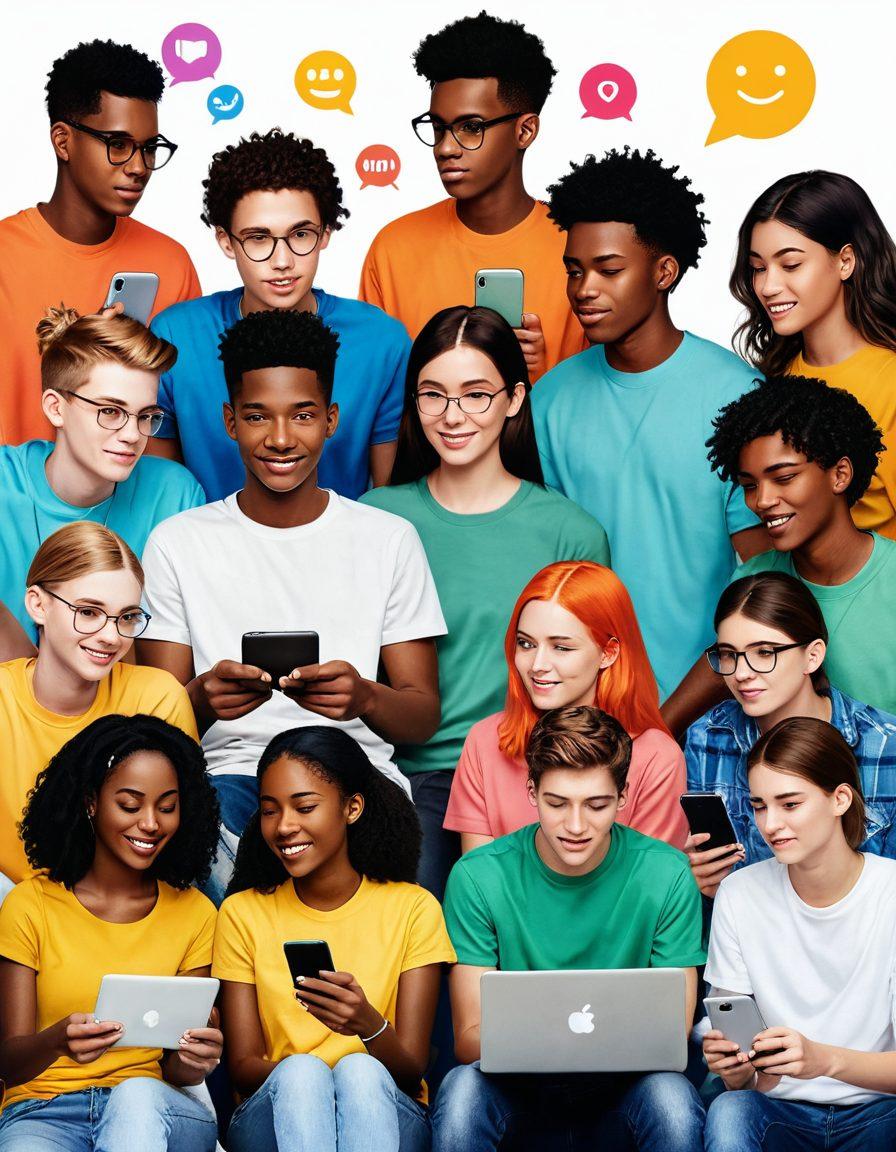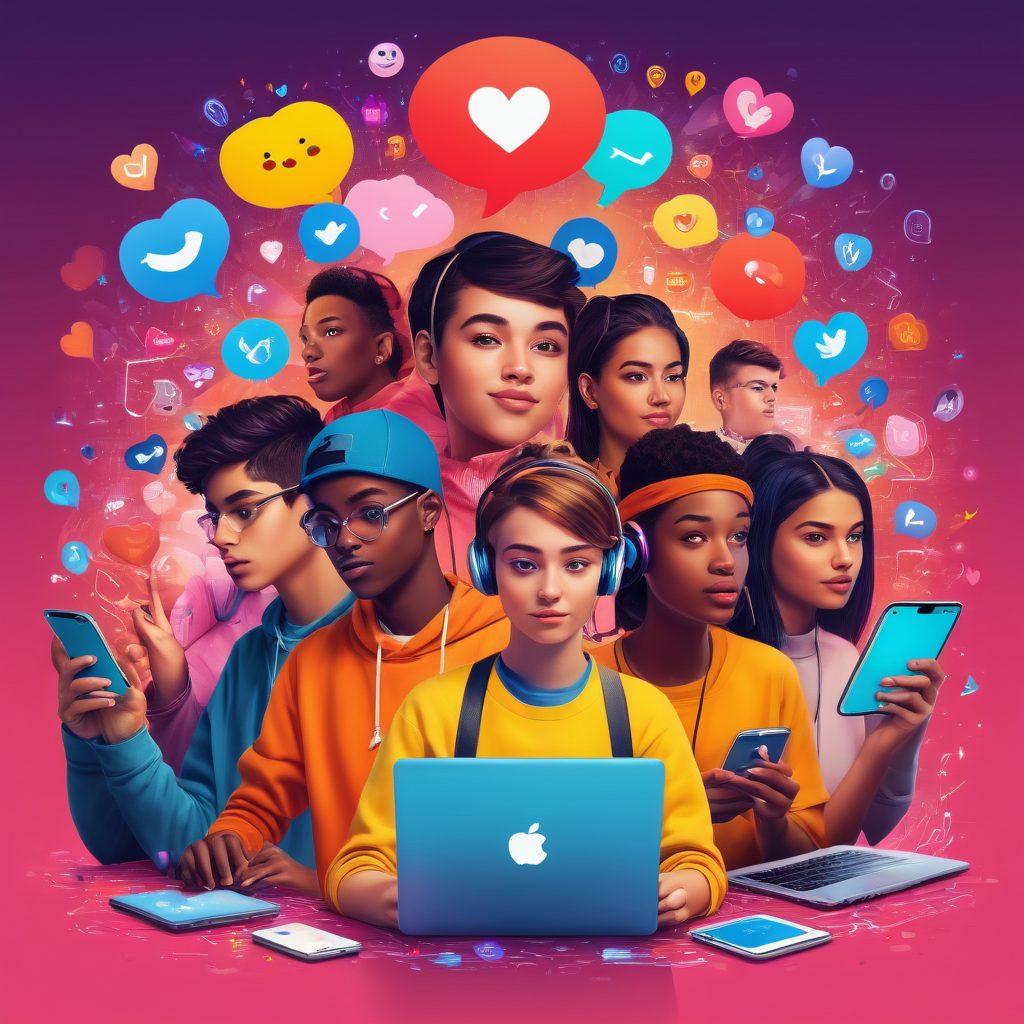Navigating the Digital Maze: Understanding Youth Culture and Identity in the Age of Social Media
In today's fast-paced world, navigating the digital maze of social media can sometimes feel like trying to find your way through a labyrinth without a map. For modern youth, this maze is filled with vibrant colors, constantly changing paths, and myriad distractions. But at the heart of it all lies an essential truth: youth culture is being profoundly influenced by social networks. The impact of platforms like Instagram, TikTok, and Snapchat extends beyond mere entertainment; they shape identity and define teenage lifestyle in ways we are only beginning to understand.
Think about this: have you ever scrolled through social media and found yourself captivated by a viral challenge or an inspiring hashtag? The power of social platforms in trendsetting is astounding, and it offers insight into the adolescent trends that fuel youth identity. From 'fitspiration' to the latest dance craze, the influence of peer interactions on these social networks can either promote self-love or ignite insecurities. As we dissect these dynamics, we must ask ourselves—how do these digital landscapes affect the way teens view themselves and each other?
The online presence of youth communities acts as an echo chamber for shared experiences, challenges, and aspirations. Inside these online forums, discussions can delve into teen issues like mental health, body image, and social pressures, acting as safe havens for the seekers of understanding. This is modern kids' way of trying to carve out their identity amidst the swirling noise of the digital world. What role do these online discussions play in shaping our teens' perceptions of themselves? How vital is it for them to engage with their peers in these spaces?
Engagement in youth activism, fueled by social networks, is perhaps one of the most striking effects of digital youth culture. We live in an age where teenagers are not just passive consumers but active participants in global conversations. From climate change to social justice, platforms become launchpads for movements that resonate deeply with current generations. This shows us that youth identity is not just being shaped by trends; it is also being molded by the causes they champion. How can we support this powerful wave of passionate young activists and help them find their voice within the noise?
In conclusion, understanding the influence of social networks on youth identity requires a blend of awareness and empathy. The world of teenage communication is littered with both opportunities and challenges. As parents, educators, and allies, engaging with teens about their experiences can foster a healthier perspective on what their digital identities entail. We must aim to create environments where the complexities of youth culture are acknowledged and where the journey towards self-discovery is valued. Ultimately, it’s not just about navigating the digital maze; it’s about empowering our young people to confidently embrace their unique identities as they forge their paths through the maze of modern life.
Unpacking the Complexities of Teenage Communication in the Digital Age
In today's fast-paced, technology-driven world, the landscape of teenage communication has transformed in ways we could hardly imagine just a couple of decades ago. The advent of social networks has ushered in a new era of interaction, creating distinct youth cultures and identities that are shaped by unprecedented access to information and each other. As we delve into the complexities of communication styles among adolescents in the digital age, we must consider how platforms serve as both a tool and a battleground for identity formation. So, how do these modern platforms influence the way our youth express themselves in a world that's always online?
From the colorful tapestry of youth subculture to the constant buzz of online forums, teenagers today are navigating a complex mingling of influences and trends. Peer influence has persisted as a powerful force in shaping adolescent behavior, but the way it manifests has shifted dramatically. Can you remember a time when the whispers of a friend were enough to sway your opinion on the latest shoe trend? Now the landscape shifts daily, with fitspiration and lifestyle aesthetics driving a race for relevance in a constantly evolving online society. So, what does this mean for the teenage lifestyle?
Teenage communication has become a blend of creativity and caution, with digital media acting as both a canvas and a prison. Hashtags, emojis, and snapshots speak volumes more than traditional texting ever could. Young people often find themselves trying to navigate the pressures of fitting into popular adolescent trends while expressing their unique identities. Each post is a calculated risk, revealing layers of emotion and desire for connection amidst a backdrop of youth activism and engagement. Is it possible that the digital youth, through their online discussions, are redefining what it means to be a teen today?
The beauty of youth culture lies in its ever-evolving nature – the very concept of 'jailbait' exists in a context very different from what it might have meant in previous generations, and yet it still sparks debates amongst teen communities and parents alike. As these varying contexts shift, so too do the topics teenagers choose to engage with on social platforms. As young individuals explore their identities, whether through the lens of collective social movements or personal self-expression, the intricacies of teenage communication reveal the duality of empowerment and vulnerability. Are the voices of the youth finally being heard, or are they still trapped in the chains of adolescent expectations?
In this journey of unpacking teenage communication in the digital age, we discover that understanding the motivations behind certain behaviors and engagement patterns can lead to more meaningful connections with our youth. The shift toward digital realms allows young people to approach heavy teen issues like mental health and identity with newfound openness, solidifying bonds in a time where isolation can often feel insurmountable. Perhaps in recognizing the transformative power of these platforms, parents, educators, and communities can foster environments where youth feel safe to share their truths and dive deeper into the emotions that shape their experiences. What if we embraced the unique perspectives of today's adolescents as crucial catalysts for change, rather than fleeting trends in an ever-shifting digital maze?
Peer Pressure and Trendsetting: How Online Communities Shape Youth Culture
In today's hyper-connected world, the adolescent experience unfolds within the vastness of social media, where norms and values are often dictated by clicks and likes. The phenomenon of peer pressure has been transformed in the digital age; no longer confined to the hallways of schools or the confines of youth community centers, it now permeates social networks, shaping youth culture in unprecedented ways. As young people navigate this digital maze, they are not just influenced by their immediate surroundings but by a plethora of online discussions and trends that echo across the globe. How do these online forums mold the teenage lifestyle, and what does this mean for youth identity?
Each notification can feel like a siren call, drawing youth into a world rich with possibility and expectations. Young stars and influencers emerge as trendsetters, casting waves of peer influence that resonate deeply within youth subcultures. Have you ever found yourself scrolling through your feed and feeling compelled to adopt the latest 'fitspiration' trend? When we talk about adolescent trends, it’s essential to recognize that these social platforms contribute to shaping teen interests and identities, but they can also introduce pressures that diverge from genuine self-expression. What’s more important: being true to oneself or fitting in with the latest trends?
Take a moment to reflect on the way teenage communication has evolved. Conversations that once thrived in face-to-face interactions are now frequently held across various digital landscapes. In online discussions, youth can find communities where they feel seen and heard or, conversely, where they might struggle with issues like 'jailbait' culture or unrealistic expectations. As these communities spring up, they provide both a shelter and a battleground for youth activism, challenging traditional norms and redefining what it means to belong. What role is social media playing in affirming or challenging youth identities today?
Let's consider the implications: the continuous scroll of teenage lifestyle content curated on social media fosters a sense of belonging but also variables of comparison that can skew perceptions of self-worth. Youth communities, while often a lifeline, can also perpetuate harmful trends that feed into adolescent insecurities. The dual nature of social networks represents both a double-edged sword and a goldmine of opportunities for youth engagement. How can we leverage the power of these platforms to uplift youth, rather than listening to the harsh critiques that may dominate the narrative?
In conclusion, understanding the impact of peer pressure and trendsetting in the context of online interactions is crucial for appreciating the full scope of youth culture today. Whether through the lens of youth identity, youth subculture, or the effects of peer influence, we see that digital youth are not merely consumers of content—they are active participants in shaping their narratives. By fostering healthy dialogue around teen issues and encouraging positive online communities, we can empower young people to navigate their own paths and truly embrace their unique identities amidst the digital noise. Are we ready to support youth as they chart their courses through this intricate landscape?


